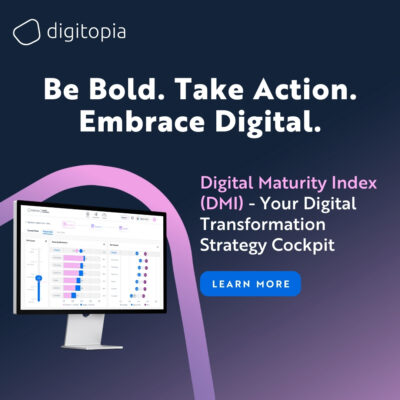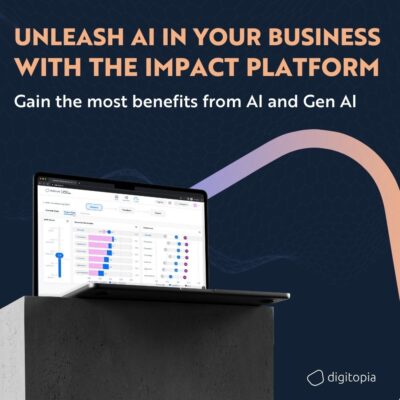
Listen on
Episode Description
AI is forcing a strategic reckoning at the highest levels of leadership.
In this Boardroom Transformation Talk episode of Play: Transform Better, we confront a hard truth: legacy business models can’t keep up with the pace, complexity, and demands of the AI era. For board members and C-suite leaders, the challenge isn’t adopting AI—it’s rebuilding the business around it.
We explore how today’s AI transformation mirrors historic inflection points like the Industrial Revolution, the rise of computing, and the dot-com era. And just like those moments, this one separates the future leaders from the fast followers.
What you’ll hear in this episode:
- Why layering AI onto outdated systems is a losing strategy
- The hidden limitations legacy models impose on data, agility, and decision-making
- Historical patterns of resistance—and why hesitation is the real risk
- A modernisation blueprint: assess the gaps, align your vision, and build a roadmap
- How to foster a transformative mindset at every level of the organization
This conversation is designed for decision-makers navigating board-level uncertainty. If your organization is still trying to adapt AI without redefining its model, this episode will help you see what’s missing—and what’s next.
➡ The future doesn’t wait. It’s time to rethink what your business is built on.
Episode Transcript
In today’s really fast-moving business world, when you think about your own organization’s future, what’s the biggest, most fundamental thing holding your legacy model back? Is it needing the latest AI tools, or is it something deeper, more structural?
Well, that’s the crucial way we need to look at things now.
We’re seeing what you could almost call a major business transformation. And it’s heavily driven by AI, by these rapid advances. This isn’t small tweaks. It really feels those big historical moments, periods of massive change, that force us to rethink everything from the ground up. And the research we’ve looked at really hammers home that thriving now means more than tapering over the cracks.
Our focus in this deep dive is to explore why that deep foundational rethink of business models isn’t a good idea, but actually essential with AI emerging. We’ll pull in some parallels from past tech revolutions too.
And for our listeners, folks operating at the board level, you’re probably in the thick of this, grappling with how to position your company strategically, not to survive, but really flourish in this AI era. Hopefully this deep dive can bring some clarity, maybe strategic insights into that transformation imperative. Let’s dig in then.
AI as a True Augmentation, Not Just a Tool
The material really emphasizes that AI isn’t another incremental upgrade. It’s framed as a serious augmentation of what we can do. Different from tech shifts, maybe we’ve seen before. And what’s really interesting there is the implication that this augmentation demands a much bigger response than sort of slotting it in.
The sources are suggesting companies might need to be ready to redefine their core purpose, rebuild foundational systems, maybe even revolutionize their whole strategy.
Wow, it’s holistic, not the tech problem. Precisely, it touches everything. It really does feel like one of those hinge points in history. And to get a handle on the scale of it, the material makes this quite insightful comparison to the Renaissance and the Enlightenment. Those weren’t about art and philosophy where they fundamentally changed society. Commerce included.
Historic Parallels: From Printing Press to Dot-Com
They’re powerful examples of that kind of total transformation we’re talking about. The key things back then were this widespread questioning of how things were always done. Challenging convention.
And this explosion of creativity, of innovation, everywhere plus this underlying drive for, reason and finding things out, that propelled everything forward. It’s almost that same spirit. Questioning everything is needed inside businesses now.
And one source specifically mentioned the printing press, how it sped up knowledge sharing. How does that link to AI’s impact today?
Well think about it. The printing press made information widely available fast. It changed how societies worked, how economies functioned. AI is doing something similar but arguably even faster and broader.
Accelerating change across the board.
In ways we haven’t really seen before, it’s compressing those cycles. That’s a really strong analogy and to drive this point home of about tech shifts and business, the material looks back at previous waves Let’s start with the industrial revolution. What were the big lessons there for companies?
Ah the industrial revolution that was the huge shift from hands to machines, and the key takeaway: Businesses that clung to the old ways, the manual methods, they basically got left behind. Became obsolete. While the ones that jumped on mechanization early, they got huge advantages, set new standards.
Then fast forward, we get computers in the later 20th century, another massive transformation. Computers totally changed how companies handled data. Huge jumps in efficiency productivity. >> And again, a dividing line appeared. >>
Between those who digitized and those who hesitated, the ones who embraced it unlocked completely new ways of operating.
And then maybe more in recent memory for many, the dot com boom and e business. That changed communication, customer interaction, everything. The internet forced companies to totally rethink how they dealt with customers to build digital first model. Many had to essentially rebuild from the ground up in many cases to stay in the game and look who dominates now. Often the early movers in that digital space.
If you look at this pattern, the sources are saying there’s this recurring theme. Big tech shifts, force businesses to fundamentally rethink and rebuild.
Why Modernization Is a Must for AI
And the age of AI isn’t continuing that trend, it’s maybe even amplifying it. That’s a really crucial point to stress. The material is quite explicit.
In the AI era, pretty much everything needs reevaluation. Processes systems, people, culture, even management styles. It’s not adding an AI layer on top. No, not at all. It’s about transforming the whole entity.
A holistic approach is needed. Which brings us to this idea of modernization being imperative now.
The argument is, AI’s potential is capped if you try to bolt it onto old systems, old ways of working. What are the main limitations there?
Limitations of Old Systems
Well the core issue is that AI really needs modern infrastructure and good data to work well. Old systems are often too slow, they can’t handle the volume, the data isn’t clean.
It stops organizations from really getting the true power out of AI. Trying to run the latest super advanced software on a computer from the 90s. It won’t perform.
And the upside is a modernizing this context. The presented is pretty substantial. The material lists a few key benefits.
Maybe start with decision making. What’s really powerful here is how AI lets you shift from looking back at data to actually predicting what might happen, getting proactive insights. Which legacy systems struggle with? Absolutely.
They don’t have the real time processing or the analytical horsepower for that kind of rapid smart intelligence. you end up reacting to market shifts instead of maybe anticipating them. that makes sense.
Then there’s the impact on efficiency and productivity. AI automation can take over a lot of the repetitive manual stuff, reducing errors to…
AI for Legacy System Modernization: Faster, cheaper, better
Cream people up. Freeing up your valuable people to focus on more strategic work, higher value stuff. You can’t make that shift if you’re stuck without dated ways of doing things.
And data itself becomes even more central with AI, doesn’t it? Massively.
AI eats data. Modernizing how you collect it, manage it, analyze it, use it, that becomes absolutely critical. Otherwise, you’re underusing a key asset. Arguably your most valuable asset in the age of AI. Companies that don’t get their data strategy are leaving huge value on the table.
Customer interaction in another big area for AI transformation. AI allows for personalization at a scale we couldn’t dream of before. Anticipating needs, tailoring interactions, providing quick, smart responses. Things customers increasingly expect. and that’s key for satisfaction, for loyalty.
Legacy systems can’t deliver that kind of nuanced interaction consistently.
And finally, modernization is framed as vital for staying adaptable, for future proofing. Well, the pace of change isn’t slowing down, is it, it feels it’s accelerating. here’s that way. organizations need to build in flexibility, agility to keep up. If you’re locked into rigid, old systems and old mindsets, you’ll find it incredibly hard to navigate what’s coming next.
It’s clear this need for change is huge. And the sources mention that natural human tendency to resist big shifts. There are historical parallels there too. You had the leadights during the industrial revolution fearing what machines would do to their jobs, understandable, but…
History remembers them as resisting progress.
And we saw similar skepticism, loads of doubt, around computers when they first appeared, and even the internet in its early days. But the big lesson from history seems to be that the change happens anyway, doesn’t it?
The AI-Driven Approach to Transforming Legacy Systems
Regardless of the resistance.
And the ones who get on board early who adapt, they tend to gain the big advantages, sometimes creating whole new industries. While some resistance is maybe normal, it’s ultimately not a winning strategy in the long run for an organization.
The transformation train keeps moving. For a board leader listening, recognizing this scale, this business transformation, what are the first strategic steps?
Where do you start guiding the organization? Well, the material points to a few key things.
First off, a really honest, clear-eyed look at where the organization is now. An assessment. Where are the specific old systems, the outdated processes, the ingrained cultural habits that are most likely to block progress in this AI world.
You have to know your starting point, the friction points.
And once you have that assessment, what’s next?
Then it’s about building a clear roadmap for modernization of plan.
Not trying to boil the ocean all at once. Prioritize strategically, look for some quick wins, maybe things that show early value and build some momentum, but also define those bigger long term transformation goals. It needs to be phased coherently.
And it’s not about the tech or the processes, there’s a mindset piece too. Hugely important. Fostering what you might call a transformative mindset across the organization.
What does that look like? It means actively encouraging continuous learning adaptation, making it safe to experiment, to take calculated risks, empowering people at all levels to question the old ways and bring new ideas forward.
And how do you make sure all this effort is actually paying off that it’s delivering results?
Measurement. You have to make it measurable. Define clearly, keep performance indicators, your KPIs, track progress against them diligently, evaluate the impact of what you’re doing.
What gets measured gets done? That’s the idea.
Final Reflection for Leaders
This data driven approach lets you adjust course if needed and shows the actual value being created. It builds the case for continued transformation.
And lastly, the sources mention that navigating all this complexity might mean looking outside for help. Given how complex modernizing legacy stuff and integrating AI effectively can be, partnering with experienced transformation specialists can be really smart.
Bringing in expertise. Specialized knowledge, proven methods, maybe an objective view, it can help navigate the hurdles and make the whole journey smoother and more effective.
If we step back and summarize, the big message feels the age of AI, really demand fundamental strategic change. It’s not an upgrade, it’s a chance to build fundamentally different businesses, more agile, more intelligent, more resilient.
That’s absolutely the core imperative.
It’s a huge opportunity really to build organizations that are genuinely ready for the future.
It won’t be easy, there will be challenges, but the potential payoff for those who really embrace this transformation is enormous.
A powerful thought. On that strategic note may be a final point for our listeners, for you as a leader to consider.
Inside your own organization, what specific rigid structures may be outdated assumptions or long held ways of thinking are most vulnerable now in this age of AI.
And what deliberate steps could you start taking, even small ones to begin dismantling and rebuilding them, to foster that greater agility, that intelligence, that true transformative mindset throughout your company.






